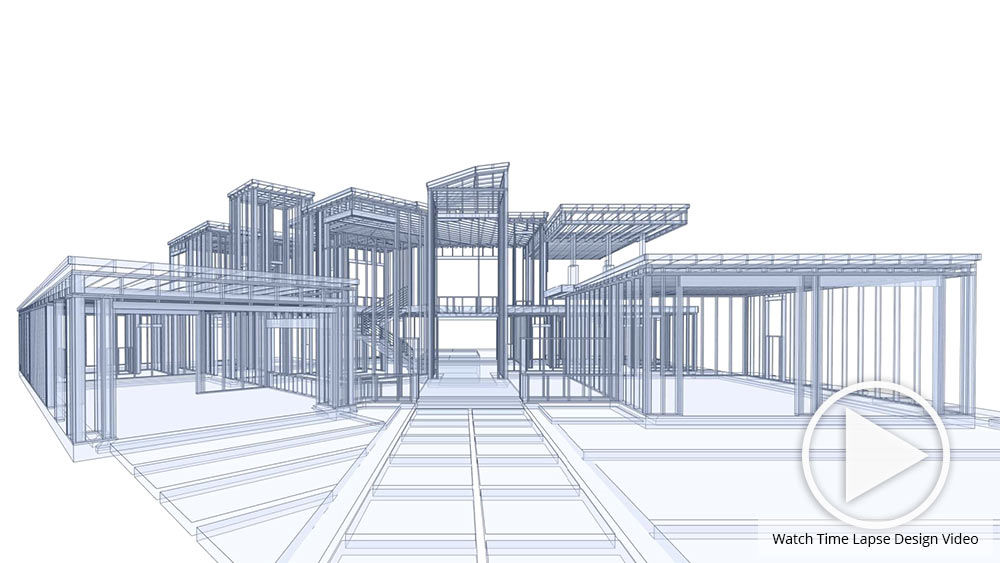Transforming Rooms: The Vision of CDA Architects for Modern Living
Wiki Article
A Detailed Overview of Architectural Styles and Their Influence on Modern City Planning and Advancement
Building styles have actually long functioned as a mirror to the societal worths and technological developments of their time, playing an essential duty in forming contemporary city planning and advancement. From the splendour of Neoclassicism to the utilitarian strategy of Brutalism, each style has presented one-of-a-kind principles that influence metropolitan aesthetic appeals and capability. As contemporary obstacles arise, including sustainability and area demands, understanding these historical structures becomes essential. The resulting discussion not only notifies future layout methods yet additionally elevates pertinent inquiries regarding the equilibrium between heritage and advancement in our progressing urban landscapes.Historic Summary of Building Styles

As cultures transitioned through the Center Ages, Gothic style emerged, defined by its verticality and elaborate outlining, mirroring the spiritual aspirations of the period. The Renaissance noted a rebirth of classical ideals, combining art and design in innovative methods that influenced succeeding designs throughout Europe.

Today, architectural designs remain to evolve, driven by globalization and sustainability issues, reflecting a vibrant interaction in between heritage and advancement. This historic summary highlights the relevance of style as a mirror of social advancement and as a catalyst for metropolitan advancement.
Key Architectural Styles Explained
The variety of architectural styles mirrors the myriad influences that shape our developed environment, each personifying unique characteristics and cultural values. Key architectural styles include Classical, Gothic, Baroque, Innovation, and Postmodernism, each representing unique historic contexts and visual viewpoints.
Timeless architecture, rooted in old Greece and Rome, stresses balance, proportion, and making use of columns (cda architects). On the other hand, Gothic style, prospering between Ages, is characterized by sharp arcs, ribbed safes, and flying buttresses, developing an ethereal high quality in basilicas. Baroque architecture, emerging in the 17th century, is marked by grandeur, elaborate embellishment, and a vibrant interaction of light and darkness
Modernism, which gained momentum in the very early 20th century, focuses on function over type, making use of brand-new materials like steel and glass to create minimalist frameworks. Postmodernism, reacting versus the austerity of Modernism, embraces eclecticism and historic reference, often integrating lively aspects and paradox.
:max_bytes(150000):strip_icc()/Buildingdesigns-GettyImages-912482942-db55b3af711044a3a42ad1040c6711a9.jpg)
Effect On Urban Preparation
In shaping the growth of cities, architectural styles considerably influence city preparation decisions. The option of building style often dictates the appearances, functionality, and total personality of urban atmospheres.Furthermore, architectural styles can impact zoning regulations and land make use of policies. Urban coordinators must take into consideration the prevailing building patterns when making districts, making sure that brand-new advancements balance with existing frameworks. This factor to consider fosters cohesive city landscapes and boosts area identity.
The execution of particular architectural designs can also affect socioeconomic variables within a city. Premium contemporary styles might attract upscale homeowners and organizations, leading company website to gentrification, while more cost effective housing solutions might prioritize functional and lasting layouts to suit diverse populations. cda architects. Ultimately, the interaction between architectural designs and metropolitan preparation develops dynamic cities that reflect both historic context and modern demands, forming the lived experiences of their citizens
Sustainability and Modern Architecture
Architectural designs play a crucial role in attending to modern obstacles, specifically in the world of sustainability. As city areas increase and environmental concerns magnify, contemporary design significantly embraces sustainable style principles that prioritize energy effectiveness, source conservation, and minimal eco-friendly effect.Contemporary building activities, such as biophilic style and green architecture, supporter for structures that integrate with their surroundings, using natural products and promoting biodiversity. These designs typically include renewable resource resources, such as photovoltaic panels and wind turbines, to lower dependence on fossil gas and reduced carbon footprints.
Additionally, the combination of innovative technologies, such as wise structure systems, boosts energy management, enhancing resource usage while ensuring owner comfort. Innovative water administration techniques, consisting of rain harvesting and greywater recycling, more add to sustainable metropolitan environments.
Significantly, sustainability prolongs beyond ecological concerns; it includes social and economic measurements also. By cultivating area wellness and promoting inclusivity, contemporary building styles line up with sustainable development goals. The evolution of architectural practices proceeds to shape resilient cities that not just meet the demands of the existing yet also safeguard the future for generations to come.
Neighborhood Involvement in Style
Neighborhood interaction in design functions as an important bridge in between architects and the populaces they serve, making sure that the developed setting shows the needs and desires of its users. This collaborative process welcomes neighborhood participants to add their understandings and choices, promoting a sense of possession and obligation toward the areas they occupy.Reliable community engagement uses numerous methods, such as workshops, studies, and public forums, to gather varied viewpoints. These methods promote a two-way discussion, permitting designers to comprehend local contexts while empowering homeowners to articulate their problems and wishes. This inclusivity not only boosts the layout top quality however additionally promotes social equity by resolving the unique challenges dealt with by marginalized teams.
In addition, community involvement can cause cutting-edge services that could not emerge in my company a typical design procedure. By incorporating regional expertise and social worths, engineers can develop areas that reverberate more deeply with individuals, improving functionality and sustainability. Ultimately, focusing on area interaction in layout processes causes settings that nurture social interactions, assistance wellness, and enhance community connections, thereby playing a pivotal duty in forming modern-day urban landscapes.
Conclusion
Architectural designs have profoundly affected contemporary city planning and growth, reflecting advancing cultural and technological contexts. The integration of historic looks with contemporary needs cultivates urban environments that focus on sustainability and neighborhood engagement. As cities remain to expand and adapt, the continuous click here for info discussion between architectural heritage and modern-day design concepts will continue to be crucial in producing inclusive, vibrant areas that enhance lifestyle and promote social equity. The future of city growth depend upon this harmonious equilibrium.Report this wiki page